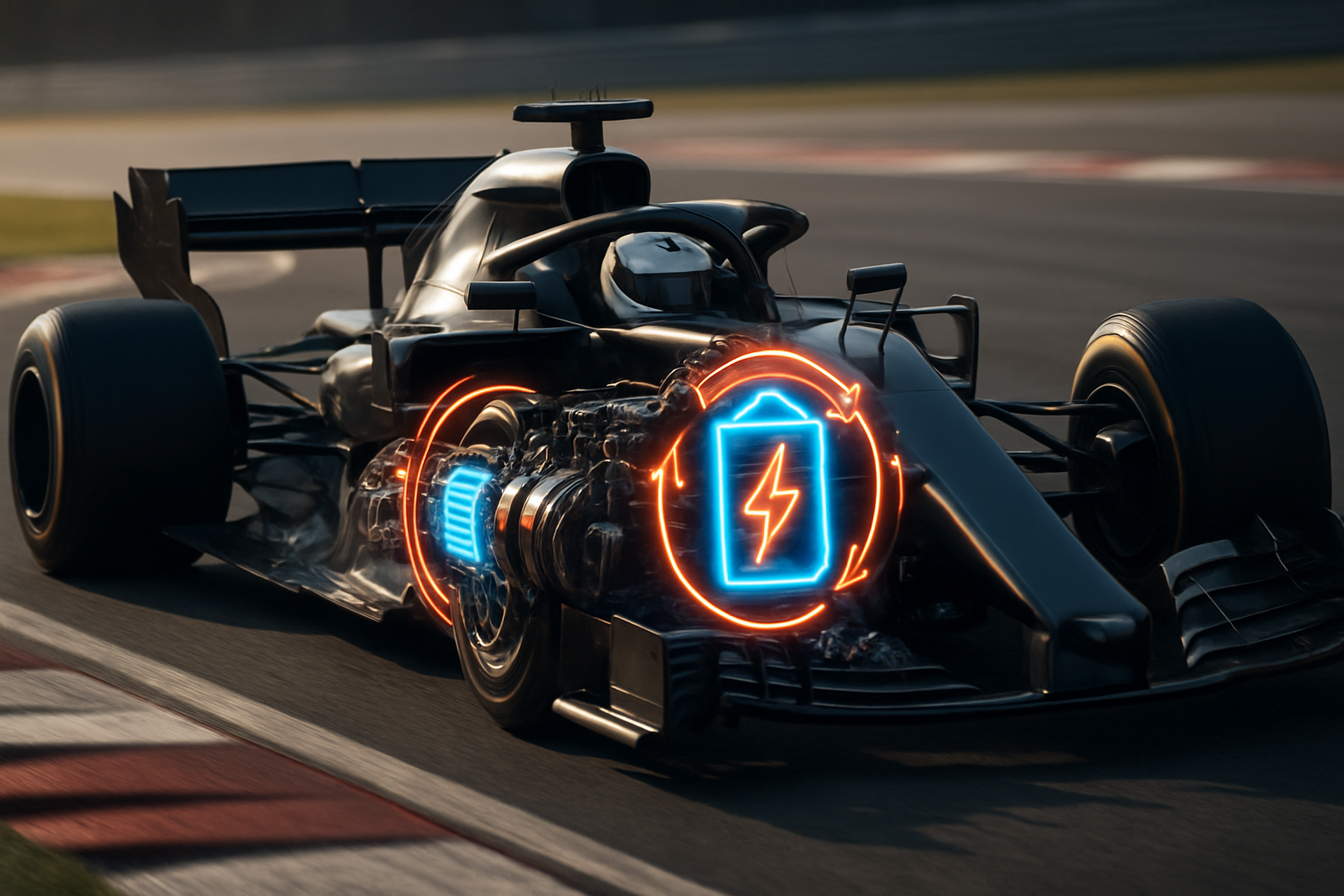Kinetic Energy Recovery Systems: Powering the Future of Racing
In the high-octane world of motorsports, every fraction of a second counts. Engineers and designers constantly push the boundaries of technology to squeeze out that extra edge of performance. One innovation that has been revolutionizing the racing scene is the Kinetic Energy Recovery System, or KERS. This cutting-edge technology not only enhances speed and efficiency but also represents a significant step towards sustainability in motorsports.

The Mechanics Behind the Magic
At its core, KERS is an ingenious feat of engineering. When a driver applies the brakes, the system captures the kinetic energy and converts it into electrical energy, which is then stored in a battery or a flywheel. This stored energy can be deployed at the driver’s discretion, providing a significant power boost for overtaking or defending positions on the track.
KERS in Action: A Driver’s Perspective
From a driver’s standpoint, KERS adds an entirely new dimension to race strategy. The ability to unleash an extra burst of power at crucial moments can be the difference between victory and defeat. Drivers must master the art of energy management, deciding when to harvest energy and when to deploy it for maximum advantage. This strategic element adds depth to the racing experience, rewarding not just speed but also tactical acumen.
Beyond the Track: KERS in Road Cars
The success of KERS in motorsports has sparked interest in its potential applications for everyday vehicles. While not yet widespread, some high-end sports cars have begun incorporating KERS-like systems to enhance performance and fuel efficiency. As the technology matures and becomes more cost-effective, we may see a broader adoption in consumer vehicles, contributing to improved fuel economy and reduced emissions.
The Future of KERS: Innovations on the Horizon
As with any groundbreaking technology, KERS continues to evolve. Engineers are exploring ways to increase energy storage capacity, improve power delivery, and reduce system weight. Some promising developments include advanced flywheel designs that offer higher energy density and more efficient electrical systems. These innovations could further enhance the performance benefits of KERS while also making it more viable for wider application in various vehicle types.
Challenges and Controversies
Despite its potential, KERS has not been without its challenges. Early iterations faced reliability issues, and there were concerns about the added complexity and weight to the vehicles. Additionally, some purists argued that KERS detracted from the raw skill of driving. However, as the technology has matured, many of these concerns have been addressed, and KERS has become an accepted and integral part of modern motorsports.
KERS and the Green Revolution in Racing
One of the most significant impacts of KERS has been its role in making motorsports more environmentally friendly. By recovering energy that would otherwise be wasted, KERS represents a step towards sustainability in a sport often criticized for its environmental impact. This alignment with green technologies has helped racing maintain its relevance in an increasingly eco-conscious world.
The Ripple Effect: KERS-Inspired Technologies
The development of KERS has spurred innovation in related fields. Energy recovery systems inspired by KERS are being explored in various applications, from public transportation to industrial machinery. This cross-pollination of ideas demonstrates how motorsport innovations can have far-reaching impacts beyond the racetrack.
KERS: A Testament to Human Ingenuity
The story of KERS is a testament to human ingenuity and the relentless pursuit of performance. From a concept that seemed almost too futuristic for its time, it has become an indispensable part of modern racing. As we look to the future, KERS stands as a shining example of how innovative thinking can lead to technologies that not only enhance performance but also contribute to a more sustainable future.
In conclusion, Kinetic Energy Recovery Systems have transformed the landscape of motorsports, offering a glimpse into the future of automotive technology. As KERS continues to evolve, it promises to play an increasingly important role in shaping the future of both racing and road-going vehicles. The journey of KERS from a racing innovation to a potential game-changer in everyday transportation illustrates the power of motorsport as a crucible for technological advancement. As we accelerate into the future, KERS stands as a beacon of innovation, efficiency, and the endless possibilities that emerge when pushing the boundaries of automotive engineering.





